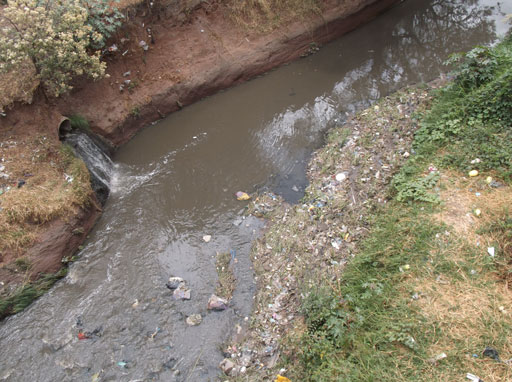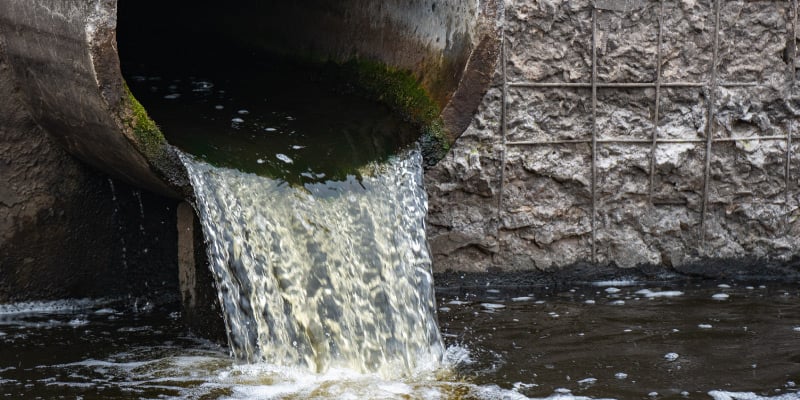Industrial Wastewater Treatment: Advanced Techniques for Effective Monitoring
Industrial Wastewater Treatment: Advanced Techniques for Effective Monitoring
Blog Article
Just How Fluid Waste Disposal Functions: A Comprehensive Review of Methods and Technologies Employed

Review of Fluid Waste Kind
The complexity of fluid waste types requires a complete understanding of their characteristics and effects for disposal. Liquid waste can generally be classified right into several types, consisting of commercial, metropolitan, agricultural, and dangerous waste. Each category shows unique residential or commercial properties, needing details administration strategies to alleviate ecological and health dangers.
Industrial liquid waste stems from producing procedures and often consists of a series of contaminants, such as hefty steels, solvents, and organic compounds. Community fluid waste, primarily making up wastewater from households and industrial facilities, consists of natural matter, nutrients, and microorganisms (industrial wastewater treatment). Agricultural liquid waste, consisting of runoff from ranches, might include fertilizers, pesticides, and animal waste, posing risks to water top quality and communities
Unsafe liquid waste is defined by its poisoning, reactivity, or potential to cause harm. Recognizing these varied fluid waste kinds is critical for developing effective disposal approaches and making certain conformity with ecological regulations.
Physical Treatment Techniques

Testing is the preliminary step, where larger particles and particles are gotten rid of from the liquid waste using displays or grates. This process shields downstream equipment from damages and makes sure smoother procedure. Following screening, sedimentation utilizes gravitational pressure to different solids from liquids. In sedimentation tanks, heavier fragments resolve near the bottom, creating a sludge layer, while the cleared up liquid can be further dealt with.
Filtration is one more crucial technique that entails passing the liquid with permeable products, such as sand or membranes, to capture smaller particles. This action enhances the quality of the fluid, making it suitable for subsequent therapy processes.

Chemical Treatment Methods
Chemical treatment methods are vital for successfully handling liquid waste, especially in addressing dissolved and colloidal impurities that physical methods may not properly get rid of. These methods make use of various chemical representatives to neutralize, speed up, or change harmful compounds into less unsafe kinds.
One typical approach is coagulation and flocculation, where chemicals such as alum or ferric chloride are included to promote the aggregation of suspended fragments. This procedure boosts sedimentation, enabling simpler removal of the resulting sludge. Furthermore, oxidation procedures, employing representatives like chlorine or ozone, are employed to break down complex organic substances and microorganisms, rendering the waste more secure for discharge or further treatment.
Neutralization is an additional vital technique, which adjusts the pH of acidic or alkaline waste streams to neutral levels, preventing possible damage to downstream systems and the environment. Additionally, advanced oxidation procedures (AOPs) make use of combinations of oxidants and ultraviolet light to deteriorate relentless pollutants, accomplishing a higher level of treatment efficiency.
Organic Therapy Procedures
Organic treatment processes play a vital role in the management of fluid waste by using microorganisms to decompose raw material and lower contaminant levels. These processes can be generally classified right into anaerobic and cardio treatments, each employing particular microbial neighborhoods to accomplish efficient waste deterioration.
Cardio therapy involves making use of oxygen to promote the break down of organic products by bacteria. This process is commonly implemented in activated sludge systems, where aeration storage tanks give a conducive atmosphere for microbial growth, leading to the oxidation of natural pollutants. The resultant biomass can be separated from dealt with effluent through sedimentation.
On the other hand, anaerobic treatment happens in the absence of oxygen, counting on different bacteria to damage down natural matter. This technique is particularly beneficial for high-strength waste, as it produces biogas, a renewable energy source, while minimizing sludge production. Technologies such as anaerobic digesters are regularly employed in municipal and commercial applications.
Both cardio and anaerobic organic treatments not only lessen the environmental impact of fluid waste yet also assist in source healing, making them important parts of sustainable waste monitoring strategies. Their flexibility, effectiveness, and performance sustain their prevalent execution across different fields.
Emerging Technologies in Disposal
Innovative techniques to liquid waste disposal are quickly developing, driven by improvements in modern technology and a raising focus on sustainability. Among these emerging technologies, membrane bioreactors (MBRs) have gained traction for their capability to incorporate biological therapy with membrane filtration, resulting in top notch effluent that can be reused in various applications. MBRs enable smaller sized useful reference footprints and a lot more reliable operations contrasted to traditional systems.
An additional appealing advancement is making use of anaerobic food digestion incorporated with nutrient recovery modern technologies, which not just treats fluid waste however also creates biogas and recoups valuable nutrients like nitrogen and phosphorus. This dual benefit boosts resource efficiency and minimizes ecological impact.
Furthermore, progressed oxidation processes (AOPs) are being adopted for the deterioration of complicated natural contaminants. These methods use effective oxidants and stimulants to damage down contaminants at the molecular level, supplying a highly reliable solution for challenging waste streams.
Additionally, the combination of expert system and artificial intelligence official site in waste monitoring systems is maximizing functional effectiveness and predictive upkeep, causing decreased costs and enhanced ecological check that compliance. These modern technologies show a significant shift towards more effective and sustainable fluid waste disposal methods.
Final Thought
To conclude, reliable liquid garbage disposal requires a thorough understanding of numerous techniques and technologies. The assimilation of physical, chemical, and biological therapy methods ensures the reliable monitoring of diverse waste types. In addition, the emergence of cutting-edge technologies boosts therapy efficacy and advertises sustainability in waste management techniques. By continually progressing these techniques, it ends up being feasible to deal with the expanding challenges linked with fluid waste, inevitably contributing to environmental management and resource recuperation.
Liquid waste disposal is a critical element of environmental management, needing a comprehensive understanding of different strategies and innovations customized to different waste types. Fluid waste can generally be categorized into several kinds, including industrial, metropolitan, agricultural, and hazardous waste. Agricultural fluid waste, consisting of overflow from farms, may contain plant foods, pesticides, and animal waste, presenting dangers to water top quality and ecosystems.
Numerous physical therapy approaches play a vital function in managing fluid waste efficiently - industrial wastewater treatment.In conclusion, reliable fluid waste disposal requires a comprehensive understanding of numerous techniques and innovations
Report this page